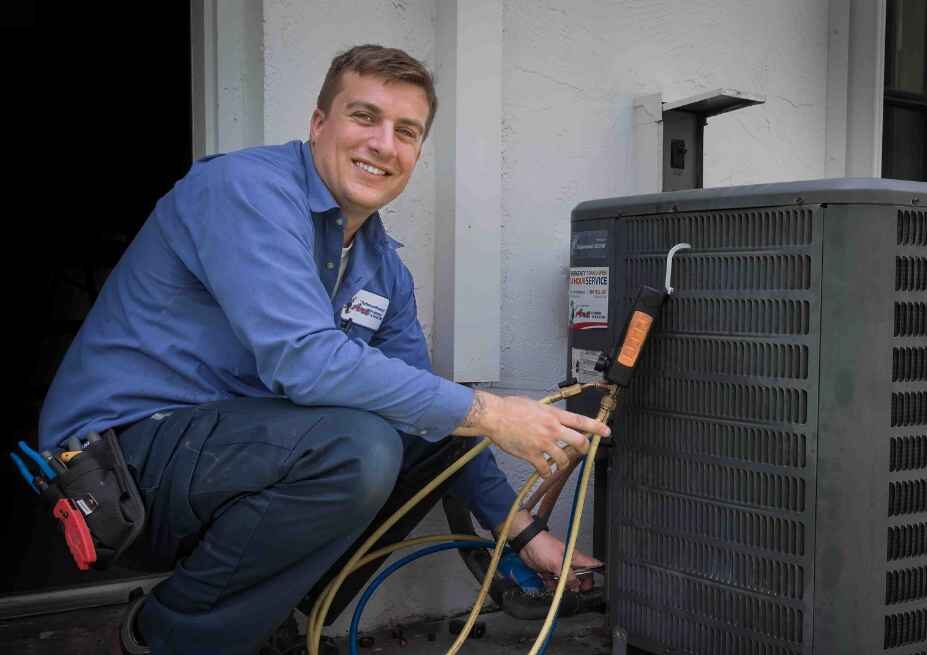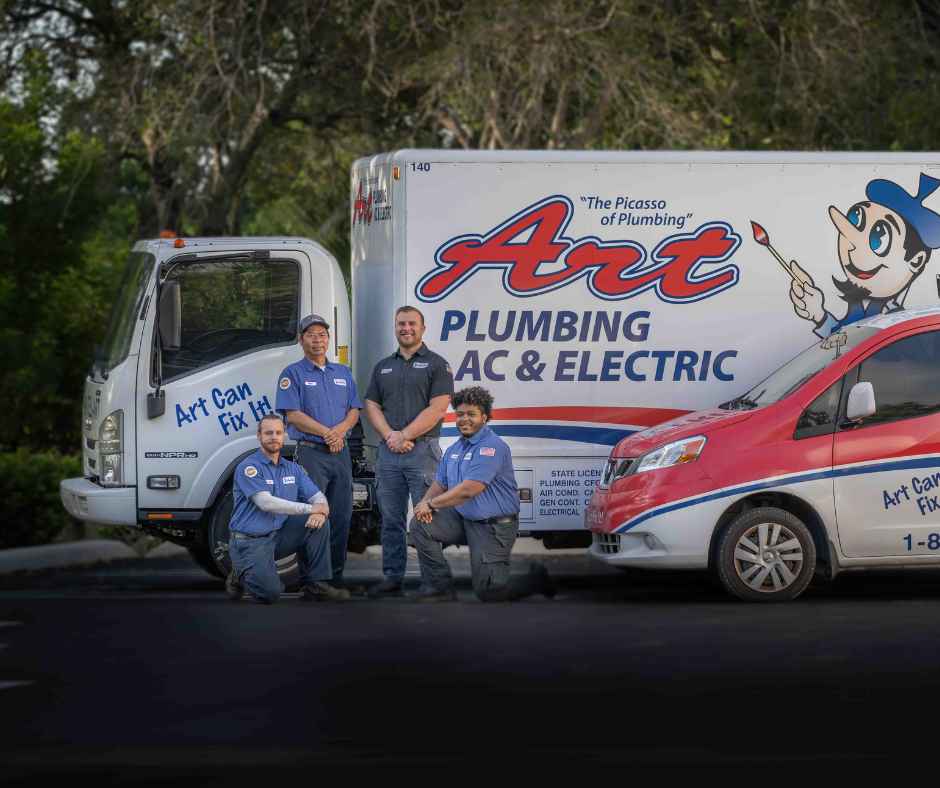What is a Sump Pump?

Water damage is one of the most frustrating and expensive problems a homeowner can face. Even a few inches of water in your basement or crawl space can ruin flooring, damage furniture, and create long-term structural issues. If left unchecked, excess moisture can also lead to mold growth, which can affect your family’s health and the air quality inside your home.
Homeowners in areas with heavy rainfall or high groundwater levels are especially at risk of flooding. Without the right protections in place, every storm or plumbing issue could become a costly disaster. That is where a sump pump comes in.
A sump pump is a small but powerful device designed to protect your home from water damage by automatically removing excess water before it causes harm. It works quietly in the background, but when you need it most, it can be the difference between a dry basement and thousands of dollars in repairs.
In this blog, we will explain what a sump pump is, why it matters, the signs that you may need one, and how to properly maintain it.
What is a Sump Pump?
A sump pump is a device installed in the lowest part of a home, usually the basement or crawl space, to prevent water from building up where it does not belong. The system sits inside a specially constructed pit, called a sump basin, which naturally collects water that enters from the surrounding soil or from leaks inside the home. When the water level in the pit rises above a certain point, the sump pump automatically activates and pumps the water out of your home through a discharge pipe.
The primary purpose of a sump pump is to act as your home’s first line of defense against flooding. Heavy rains, burst pipes, or even high groundwater can lead to water intrusion, and without a sump pump, that water has nowhere to go but into your flooring, walls, and stored belongings. By actively moving water away from your foundation, a sump pump protects your home’s structure while also preventing mold growth and other costly damage.
Homeowners in areas like Florida, where heavy rainfall is common, often rely on sump pumps as a critical safeguard. Even if flooding has not yet been an issue, having a sump pump installed provides peace of mind, knowing that your home is protected against sudden storms or plumbing failures. Without this type of protection, a single weather event could leave you with significant cleanup costs and long-term repairs.
Key Signs You May Need a Sump Pump
Knowing when it is time to install a sump pump often comes down to recognizing the warning signs in your home. Many homeowners dismiss small amounts of water or humidity in their basement as a minor issue, but these problems are often the first clues that water intrusion is becoming a serious concern. By paying attention to the symptoms early, you can take proactive steps before costly damage occurs.
Common Signs of Water Problems
One of the most obvious signs that you may need a sump pump is recurring water in your basement or crawl space. Even small puddles that appear after heavy rainfall are red flags that moisture is seeping in. Over time, repeated water exposure can lead to rotting wood, warped flooring, and weakened drywall.
Another warning sign is the presence of musty odors in your basement. These smells typically signal mold or mildew growth, which thrive in damp, dark areas. If you also notice peeling paint, stains on your walls, or visible patches of mold, it is likely that moisture is entering your home on a regular basis.
Foundation cracks with minor water seepage can also indicate trouble. While these may start small, they can widen with time and allow more water to enter. If your area has a history of flooding or your neighbors often deal with basement water issues, installing a sump pump is a wise preventative measure.
Why These Problems Happen
Water intrusion can be caused by a variety of factors. Heavy rainfall is one of the most common, as excess water gathers around the foundation and eventually seeps inside. Homes built on land with a high water table are particularly vulnerable because groundwater naturally rises closer to the surface, putting pressure on the foundation.
Drainage problems also play a major role. When gutters are clogged or the grading around your home slopes inward instead of outward, rainwater has nowhere to go but toward your foundation. In addition, plumbing leaks can contribute to standing water in lower levels, especially if the water is allowed to collect undetected.
When these conditions combine, they create an environment where flooding and water damage are almost inevitable. A sump pump provides protection by automatically redirecting water before it can harm your home.
How Sump Pumps Work and Solutions
Understanding how a sump pump functions can help homeowners see why it is such a valuable tool in protecting against water damage. A sump pump does not prevent water from reaching your basement or crawl space, but it ensures that any water that does enter is quickly removed before it can cause serious damage. By combining simple maintenance with professional support when needed, you can keep your home safe and dry.
DIY Solutions for Homeowners
There are a few preventative steps homeowners can take to reduce the risk of water problems and support the effectiveness of a sump pump. Keeping gutters and downspouts clean is one of the simplest measures, as clogged gutters can cause rainwater to pool near your foundation. Making sure the ground around your home slopes away from the structure also helps direct water where it belongs.
If you already have a sump pump, you can test it periodically by pouring a bucket of water into the sump basin. The pump should activate automatically and discharge the water through its outlet pipe. Installing a cover on the sump pit is another small improvement that can minimize odors and prevent debris from interfering with the pump’s operation.
When to Call a Professional
While small preventative steps are useful, many sump pump concerns require the expertise of a professional. If your basement experiences repeated flooding or water damage, it is often a sign that you need a sump pump installed or your existing one replaced. Loud noises, constant running, or visible electrical problems are also indicators that the system is not working properly and may fail when you need it most.
Professional help is especially important for installation. Setting up a sump pump requires more than placing a pump in a pit—it involves proper drainage planning, electrical connections, and ensuring that water is discharged a safe distance away from your home. An expert can also advise on adding a backup system, which ensures your pump will continue running even during a power outage. Calling a professional early ensures your home is protected long before the next storm or plumbing issue arrives.
Tips to Maintain Your Sump Pump
Once a sump pump is installed, regular maintenance is the key to keeping it reliable year after year. Many homeowners forget about their pump until it fails during a storm, which can leave them facing costly repairs. By making sump pump care a routine part of your home maintenance, you can extend its lifespan and ensure it works when you need it most.
Regular Testing and Inspections
A simple way to maintain your sump pump is to test it every few months. You can do this by pouring a bucket of water into the sump pit and watching to see if the pump activates and discharges the water properly. If the pump does not switch on or the water drains too slowly, it may need professional attention. Checking the sump pit itself for dirt or debris buildup is also important, as clogs can keep the pump from operating efficiently.
Keeping the System Clear
Your sump pump relies on a discharge pipe to carry water safely away from your home. If this pipe becomes blocked by dirt, ice, or outdoor debris, water may back up and flood your basement despite the pump running. Periodically inspecting the pipe and clearing any obstructions ensures that water always has a clear path out of your home. Installing a cover on the sump pit can also reduce the risk of objects falling inside and interfering with the pump’s components.
Backup and Professional Maintenance
Because sump pumps depend on electricity, power outages during storms can render them useless at the worst possible time. Adding a battery backup system is one of the smartest investments you can make. This secondary power source allows the pump to keep running even when your home loses electricity. In addition, scheduling an annual professional inspection is highly recommended. A technician can check for mechanical wear, test the pump’s float switch, and ensure the system is ready for another year of protecting your home.
Protect Your Home With a Reliable Sump Pump
A sump pump may be a small device, but it plays a big role in keeping your home safe from water damage. By preventing flooding and controlling excess moisture, it protects not only the structure of your home but also your family’s comfort and health. Homeowners who take steps early often save themselves the frustration and expense of dealing with repairs after a storm or plumbing emergency.
Whether you are noticing water intrusion for the first time or you want the peace of mind that comes with added protection, installing and maintaining a sump pump is one of the smartest investments you can make. From regular testing and upkeep to professional installation and backup systems, every step you take reduces your risk of costly damage.
If you are ready to safeguard your home, the team at Art Plumbing, Air Conditioning & Electric is here to help. Contact us today to schedule sump pump installation, repair, or maintenance and enjoy the confidence of knowing your home will stay dry, no matter the weather.





